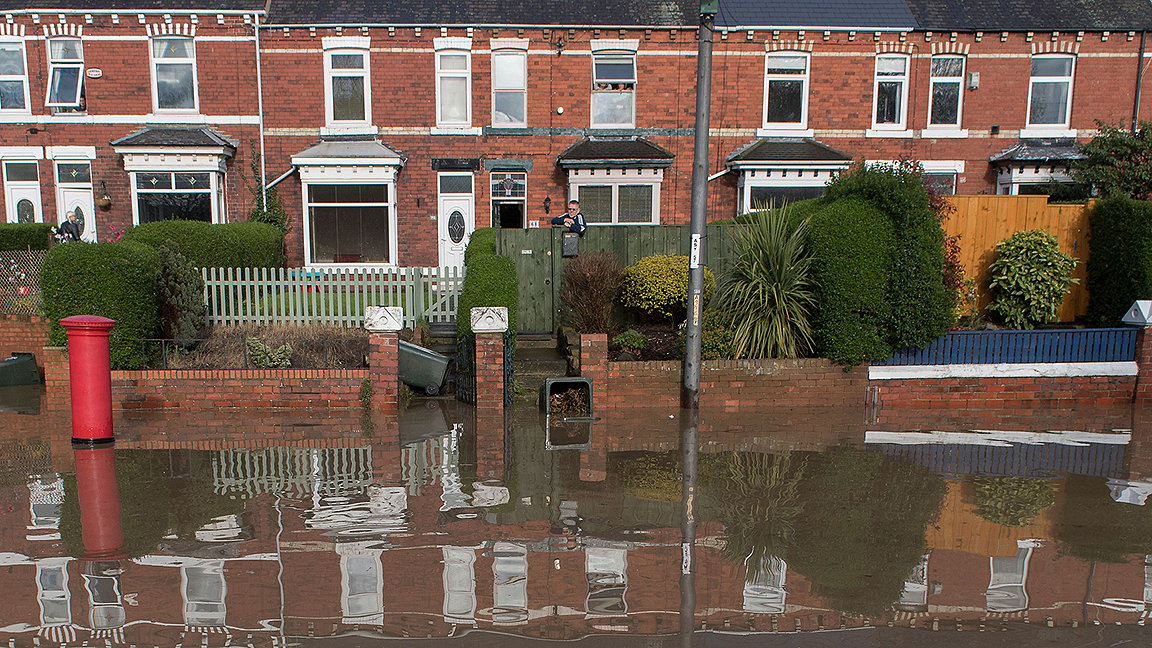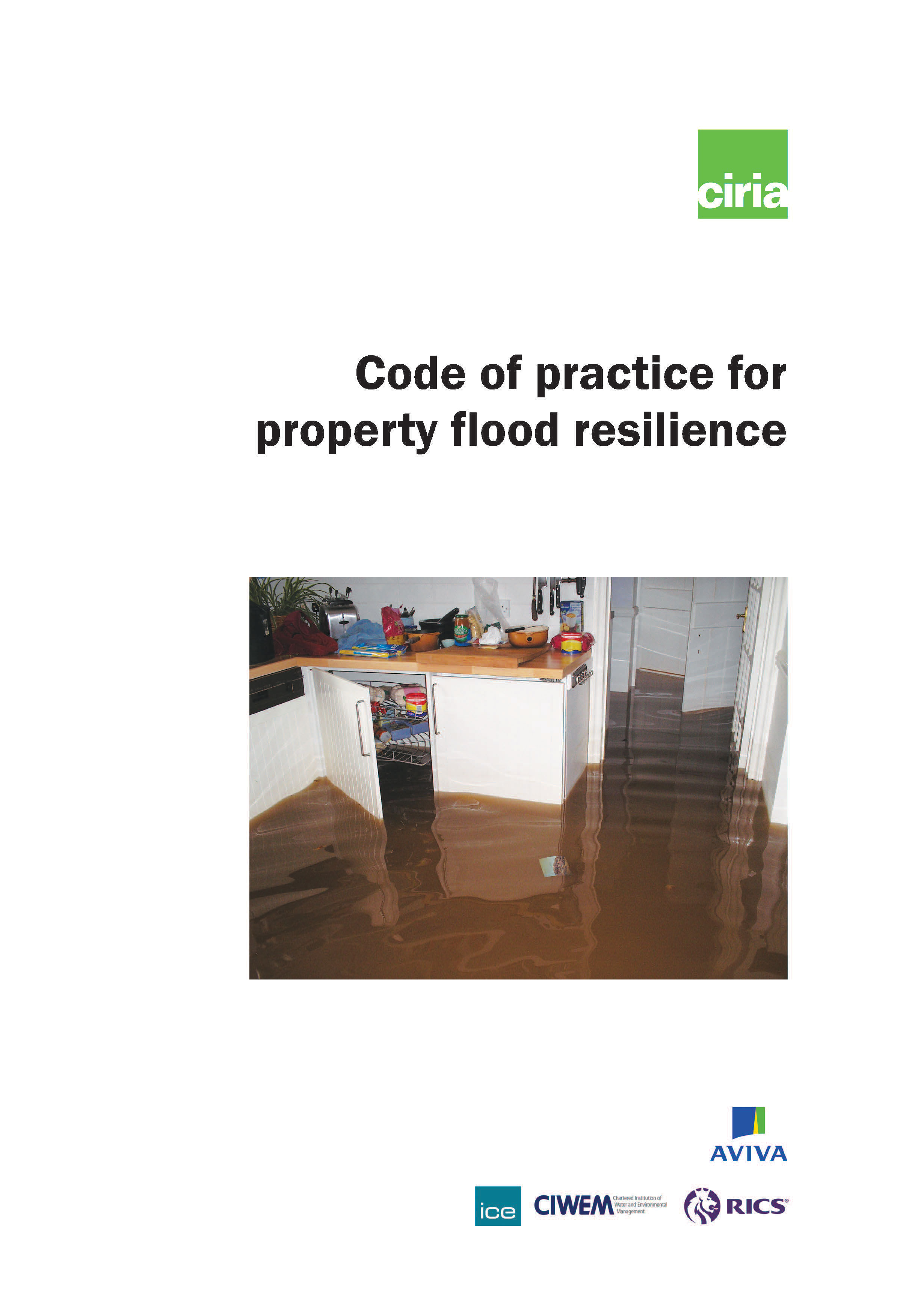
Flooding is one of the biggest risks facing the UK, with more than 825,000 homes currently at risk of frequent inundation.
The potential impact of catastrophic coastal or river flooding comes second only to pandemics and large-scale chemical, biological, radiological and nuclear attacks in the government's 2020 National Risk Register. Over the past year, we have seen major flood events related to Storms Bella, Ciara, Christoph and Dennis, with thousands of properties affected and hundreds of thousands without power. Recent flash flooding in London and Eastern England have caused disruption and chaos for many.
Official figures state that around one in five properties in England is at risk of flooding, although this does include those at low risk – that is, vulnerable to a one-in-1,000-year flood event, equivalent to an annual chance of flooding of 0.1%. The number of residential properties at risk of frequent flooding – when a flood event occurs more than once in 75 years, or there is an annual chance of 1.3% or more – is just in excess of 825,000, with 82% of these in England, 8% each in Scotland and Wales and 2% in Northern Ireland. This distribution approximates to the relative sizes of population.
The risk of surface water flooding dominates at 63% of residential properties, compared with 31% for river or fluvial flooding and 7% for coastal flooding. There are almost 190,000 non-residential properties – including businesses, industrial premises and public buildings – at risk, with a similar distribution in terms of geography and risk source to residential properties.
Flooding costs and damages
In addition to the number of vulnerable properties, flood risk can be quantified in terms of the costs it is likely to incur, the expected annual damages (EAD). These are the average damages expected in any one year for properties vulnerable to a one-in-75-year flood event or 1.3% annual chance of flooding or greater.
EAD is comprised of both the actual damage to properties and the costs of associated clean-up, displacement, alternative accommodation, stress and mental health and wider disruption.
England is likely to incur the highest absolute EAD; however, the EAD per individual is higher in Northern Ireland, Scotland and Wales. While surface water flooding presents the risk to the largest number of properties, fluvial and coastal flooding are likely to have more significant impacts when it comes to associated damages.
Rising risk of rain
The nature of flooding is changing as a result of more extended periods of rain and more intense precipitation. Longer periods of extreme winter rainfall in the UK, similar to that seen in 2013–14, are increasingly likely, and the record rainfall in 2015–16 is now seen as part of an ongoing trend. Six of the seven wettest years on record have occurred since 2000, while over the same period the UK experienced its eight warmest years.
The character of UK rainfall has also changed, with days of very heavy rain becoming more frequent. What would have been a one-in-125-year flood event in the 1960s and 1970s is now more like a one-in-85-year event.
Summers tend to be drier overall, but when it does rain it falls in heavier bursts, which has implications for flash flooding. The wettest day ever recorded in the UK was 3 October last year.
'The nature of flooding is changing as a result of more extended periods of rain and more intense precipitation'

Future flooding
Flooding is highlighted as one of the key climate-related risks by the UK Climate Change Risk Assessment (CCRA) 2017 Evidence Report. Alongside the risks posed by high temperatures to health, well-being and productivity, the likelihood of flooding and coastal change to communities, businesses and infrastructure is identified as being high, both now and in the future. The recently published Independent Assessment of Climate Risk, which will inform the UK's next CCRA due to be published next year, also identifies the current and future risk to people, communities and buildings from flooding as high and states that more action is needed.
- residential and non-residential properties
- infrastructure sites
- transport links.
The FFE estimates flood risk for the 2050s and 2080s, from a base date of October 2018, for two climate futures: specifically, a rise of 2C in global mean surface temperature (GMST), and a 4C GMST rise by 2100.
It also looks at two population scenarios: a high-growth situation, where fertility rates and net migration are high and a low-growth one characterised by lower fertility rates and net migration.
- a continuation of current levels of adaptation, assuming present policies keep on being implemented
- enhanced whole-system adaptation, assuming a more ambitious approach is taken
- a reduced whole-system approach, assuming less ambitious adaptation than currently set out in national and local policy.
In the first scenario, the number of residential properties at risk of flooding across the UK is projected to increase from 825,000 now to 1.7m in the 2050s and 2.5m by the 2080s if there is a 4C GMST rise and high population growth. With a 2C rise and low population increase, the number of properties at risk rises to 1.4m by the 2050s and 2.1m by the 2080s.
The number of people at risk of surface water flooding constitutes the largest proportion of the increase in risk, as well as the greatest proportion of the current risk.
Economic cost of flooding
With current levels of adaptation and a 2C future, EAD is projected to increase from £2bn today to between £2.7bn and £3bn in the 2080s, depending on population scenarios. For a 4C rise, the damages risk increases to between £3.5bn and £3.9bn.
Flooding from rivers accounts for the greatest proportion of damages now and in the future, but the increase is proportionally less than for coastal and surface water flooding. Groundwater presents a small proportion of UK flood risk, but is important in specific locations.
Climate change is the dominant influence in exacerbating future risk, especially for coastal flooding. By the 2080s, with a 4C GMST rise and high population growth, EAD increases to around £9.2bn in the less ambitious adaptation scenario – revealing the dire straits that could result if we do not sustain and strengthen our adaptations.
Health and well-being impacts
The people least responsible for climate change are also those who are likely to feel its worst impacts, which is as true in the UK as it is in developing countries. Socially vulnerable people face disproportionate risk now, and this is projected to continue in the future, with coastal areas, declining cities and dispersed rural communities experiencing the greatest concentrations of potential flood impact.
Flooding causes major disruption and upheaval for those who have to leave their homes, sometimes for several years. In addition to the potential for injury and death, mental health impacts are particularly evident. Public Health England research on people affected by flooding in winter 2015–16 shows that the prevalence of probable depression among those whose homes were flooded was 20%, anxiety 28%, and post-traumatic stress disorder 36.2%. This compares with the usual prevalence of adult depression in the UK of 10%, according to data from before the pandemic.
Impacts for those displaced from their homes were highest, but there is also evidence of mental health issues for those whose lives are disrupted, for example where blocked transport routes make work, education or healthcare difficult to access. Three years after flooding, the prevalence of negative mental health outcomes in affected persons is reduced but still significant.
Some coastal communities may not be viable in the long term because of coastal change caused by rising sea levels. Fairbourne in west Wales has been identified as one of the first communities whose long-term sustainability is threatened by climate change, and parts of the UK's east coast – particularly Norfolk and Suffolk – have been subject to major losses from coastal erosion and flooding.
The winter floods of 2019–20 led to economic losses of around £333m, but the value provided by protection – properties that did not flood because of flood risk management interventions properties – was around 14 times higher. Winter flooding in 2015–16 was estimated to result in losses of £1.6bn, while estimated losses from storms in winter 2013–14 reached £1.3bn; summer 2007 holds the record for the most substantial flood-related losses in the UK at around £3.9bn.
Threats to infrastructure
The UK Climate Change Risk Assessment 2017 Evidence Report identified that increasing frequency and severity of flooding represents the most significant risk to infrastructure. The more recent Independent Assessment of UK Climate Risk also identifies the risk of flooding to infrastructure as a key risk. It cites recent high-profile events such as the Toddbrook reservoir incident in 2019 and the East Yorkshire floods in 2020 as evidence of the magnitude of such risks and their interacting risks and consequences.
Disruption of transport, power and telecommunications has major impacts for both the economy and society, with more than two-thirds of properties in England served by infrastructure sites and networks located in, or dependent on others located in, areas at risk of flooding.
The proportion of infrastructure at risk of flooding is projected to increase as the climate continues to change, with a significant increase in exposure for not only utilities but also railway stations, landfill sites, hospitals and emergency service stations, care homes, GP surgeries, and schools likely across the UK. These infrastructure risks will be concentrated in many urban areas, such as Greater Manchester.
Among the environmental impacts of flooding are damage to species and habitats, soil degradation and erosion, reduced water quality and saline contamination. With climate change, agricultural land is also likely to be increasingly exposed to frequent flooding.
Investment and insurance
Planned investment in England – in the form of government Grant in Aid plus partnership funding contributions from a range of sources, such as local authorities and businesses – is in line with the Environment Agency's long-term investment scenarios, which suggest that around £1bn is needed annually to keep flood risk at the current level.
Flood Re has also filled a gap in the insurance market. In 2018, 96% of households that had previously flooded could get flood insurance quotes from more than six insurers, compared with only 9% that could do so from more than two insurers before the introduction of the scheme.
However, Amanda Blanc's 2020 review of flood insurance in Doncaster reported that 6% of owner-occupiers and 11% of tenants did not have flood cover included in their policy. The intention is that Flood Re is ultimately replaced by a return to market-based mechanisms although there are some concerns about how insurance can be provided in a 4C warmer world.
Businesses are required to take greater account of climate risk by reporting according to the requirements of the Financial Stability Board's Task Force on Climate-Related Financial Disclosures (TCFD). The Bank of England recently set out its first comprehensive stress test of the ability of the British financial system to cope with climate change. This will scrutinise the resilience of major banks and insurers to the impacts of extreme weather as well as transitioning to a Net Zero economy.
Businesses are required to take greater account of climate risk by reporting according to the requirements of the Financial Stability Board's Task Force on Climate-Related Financial Disclosures (TCFD). The Bank of England recently set out its first comprehensive stress test of the ability of the British financial system to cope with climate change. This will scrutinise the resilience of major banks and insurers to the impacts of extreme weather as well as transitioning to a Net Zero economy.
A strategic shift
Climate change and population growth means flood risk will only increase. The need to focus on wider resilience has been advocated in recently published policies and strategies such as DEFRA's Policy Statement on Flood and Coastal Erosion Risk Management and the National Flooding and Coastal Erosion Strategy for England.
Recent advances made in flood risk management include closer partnership working between the national and local government, infrastructure owners, businesses and local communities along with significant investment in improved data, modelling and mapping. There has been recent updates to national flood risk assessments in England and Wales and significant advances in the accuracy of forecasting and warning.
The focus on resilience involves a move from protection and risk management to a more strategic approach. This will involve catchment management and land-use planning, including making space for water via nature-based measures such as restoring rivers to their original form, creating natural flood storage and absorbing wave energy through the creation of salt marshes on the coast. In addition, there is a need for greater take-up of property flood resilience, and developing approaches that achieve multiple social, economic and environmental benefits as well as managing flood and coastal change risk.
Resilience to current and future climate risks will require flexible measures that can be adapted over time as the risks themselves change. The Thames Estuary TE2100 Plan is an internationally recognised exemplar of climate change adaptation that enables revisions to the timing of new interventions, changes between options and locations, and the adaptation of engineering responses. The plan also recognises wider socio-economic and environmental objectives, and the way these may be affected by adaptive measures.
There is a need for a paradigm shift in the way we view flooding and flood risk management, moving away from placing all the responsibility on the government, devolved administrations and national environmental agencies so infrastructure operators, businesses and the wider community recognise the role they can play. Ultimately, there is a need to think differently about flood risk, and the way we plan for the future, work together and involve communities.
- Code of practice for property flood resilience C790a
- Guidance on the Code of practice for property flood resilience C790b
- Making your property more flood resilient – what households and businesses need to know C790c
- CoP for PFR: guidance for local authority planners C790d.

Rachel Brisley is technical director, Climate Services at JBA Consulting
Contact Rachel: Email
Related competencies include: Management of the natural environment and landscape, Risk management, Sustainability
